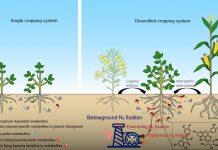Zhang XX Wang S Wang Y et al.. Differential enantioselectivity of quizalofop ethyl and its acidic metabolite: Direct enantiomeric separation and assessment of multiple toxicological endpoints. Journal of Hazardous Materials 2011 186(1): 876-882. (IF 3.723 工程技术,一区)
Abstract
Transformation products usually differ in environmental and toxicological properties compared to the parent contaminants thus causing potential and unknown environmental risks. To elucidate differential chiral recognition of the aryloxypropanoate herbicide quizalofop ethyl (QE) and its primary product (quizalofop acid QA) their enantiomeric separation and toxicological impacts to two freshwater algae were investigated. Addition of trace water (0.02–0.08% v-v) to the mobile phase selectively affected retention of analyte and induced simultaneous enantio-separation for the two compounds with intrinsical water-specific resolution mechanisms although they both possessed a chiral center in the 2-position of propionates. In algal suspensions QE was rapidly degraded to produce the acid metabolite (QA) and the product further declined whereas a reduction of QA as starting compound did not occur. Uptake and-or transformation of QE and QA were found a lack of enantioselectivity and isomer inversion while cellular membrane permeability membrane potential and algal growth showed enantioselectivity to different extents. These results suggested the presence of receptor chirality that was involved in the toxicological processes but invalid for uptake and transformation. Therefore quizalofop acid identified as environmentally relevant contaminant associated with application of the herbicide participated in the toxicological processes of the parent compound and exhibited distinct toxicological and chromatographic retention properties.







